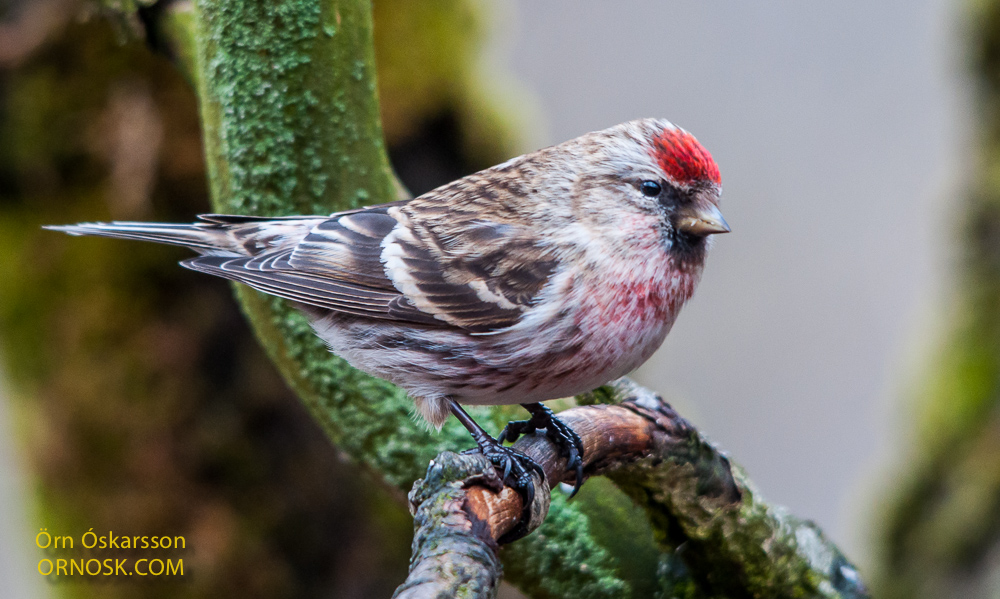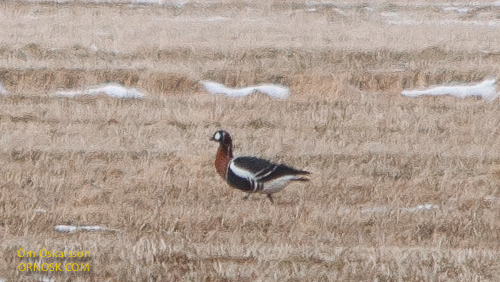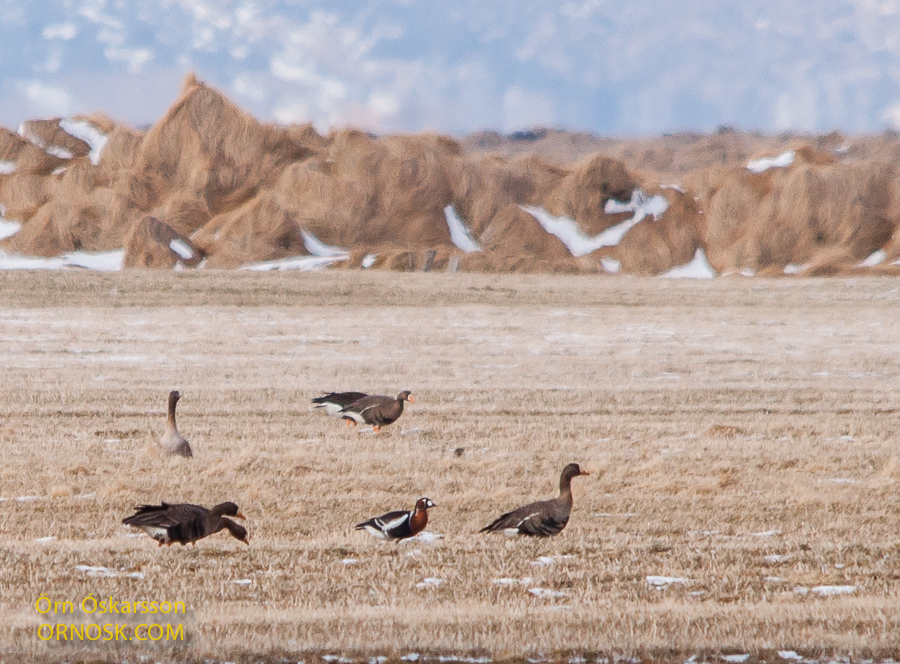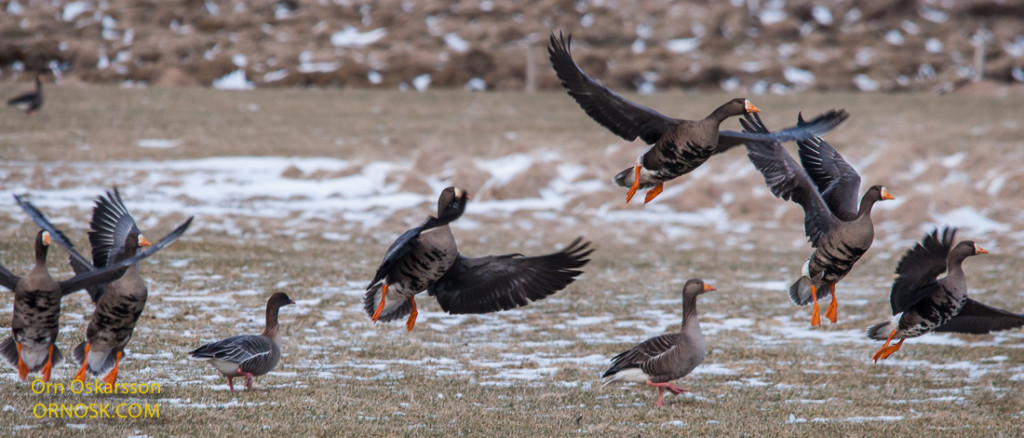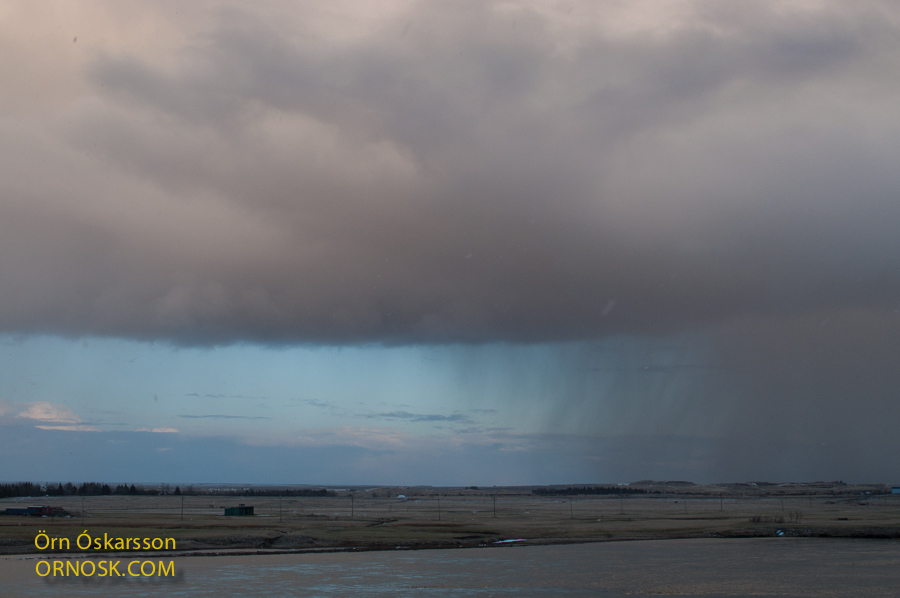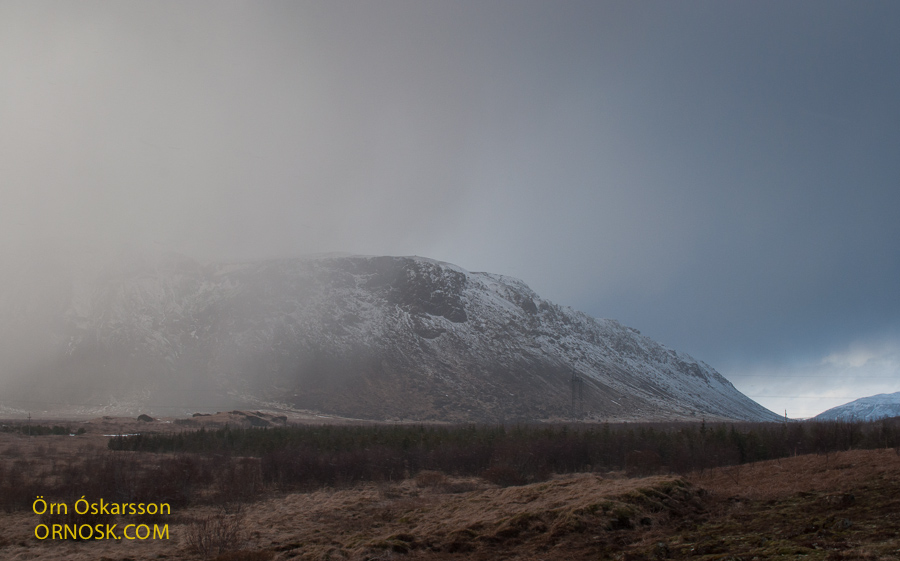Courting in the garden is now in full swing. The Redpolls are the loudest and most boisterous. Around 20-30 Redpolls come and make use of the feed and there is a lot going on. The males are constantly fighting and trying to get the attention of the females. Many of them now boast a pink chest and the red patch on their forehead easily catches one’s attention where ever they go.
Eyjafjallajökull – five years from eruption
Today it is five years from the beginning of the eruption in Eyjafjallajökull volcano in Iceland . The eruption in Eyjafjallajökull on April 14, 2010, affected economic, political and cultural activities in Europe and across the world. But it was a beautiful and a memorable event. A photo from May 1, 2010.
Red-breasted Goose
Geese in big groups
Geese are now in big groups in meadows and fields in the south of Iceland. They come from their winter grounds in the British Isles.
Most of the geese are Pinkfoot (Anser brachyrhynchus) and Greylag (Anser anser) which are breeding birds in Iceland. Groups of Greenlandic Whitefront (Anser albifronssem) come and stopover in Iceland on their way to and from their breeding grounds on the West coast of Greenland.
The photo is taken this morning of a group of Whitefronts, along with one Greylag and one Pinkfoot. Click on the photo to and see if you can spot them.
April weather
The Goldcrest endured the winter
Today I saw a Goldcrest in a grove in Hellisskógur in Selfoss. This is the first Goldcrest I spot since December. I was beginning to think they had all died in the blizzards and cold this winter. But here at least is one that endured throughout the winter and I am amazed at its resilience.

This winter has been the toughest in the south of Iceland in 15 years and therefore quite a feat for a small bird like the Goldcrest to survive. The Goldcrest is the smallest bird in Europe, weighing only 5-7 grammes. In 1996 the first known breeding in Iceland was confirmed and since then their numbers have been increasing.
Spring is back
Spring postponed
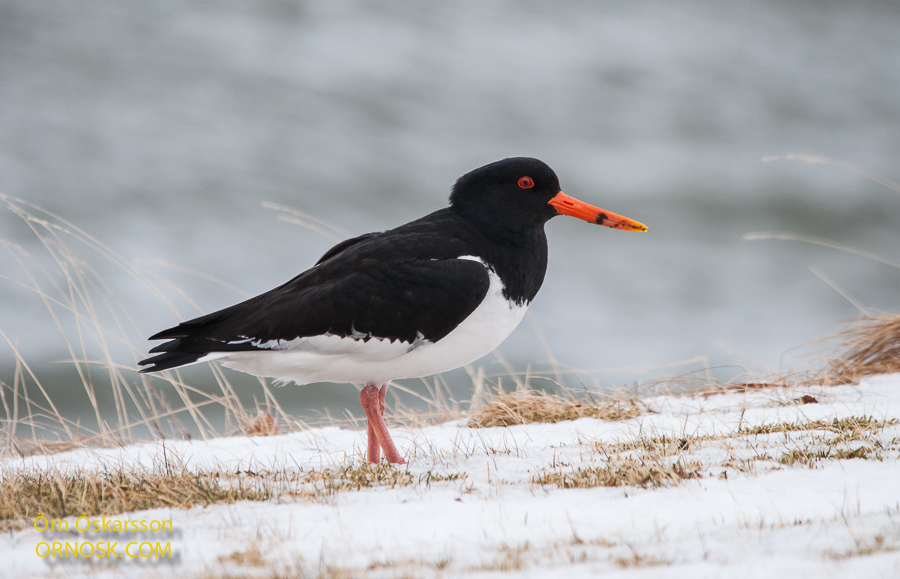
We had spring for a few days and then it is snow and frost again. The migratory birds that have arrived try to find shelter and survive storms and blizzards like this Oystercatcher (Haematopus ostralegus) that was looking for food under the snow on a meadow outside Selfoss yesterday. The weather forecast predicts that spring will give Iceland another try next week. We wait patiently.
Brent Geese stopover in Iceland
Five Brent Geese (Branta bernicla) were today at the coast near Eyrarbakki, South Iceland. They are on their way from Ireland to Canada.
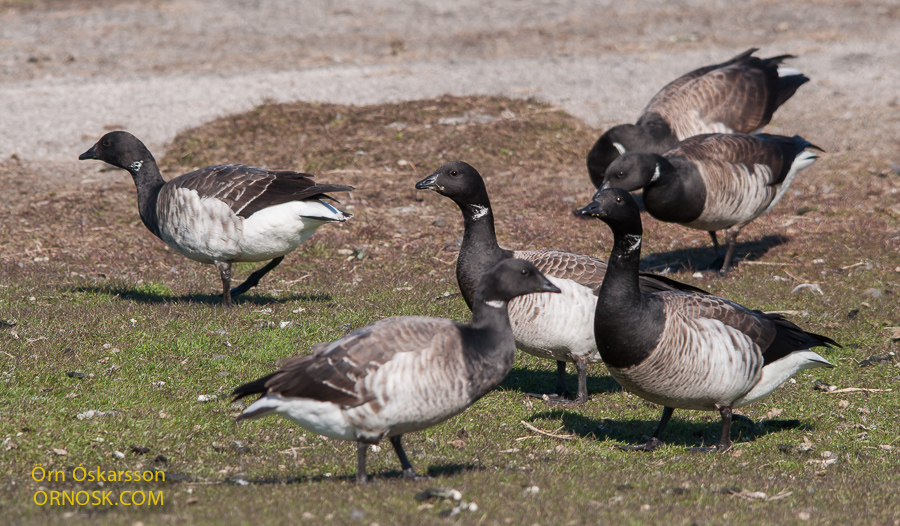
Brent Geese have a stopover in Iceland in spring and autumn on their way to and from their breeding places in Canada to their winter stations in Ireland. They stopover here for about 4 – 6 weeks on all their trips and now the first are here, a stopover on the way to Canada.
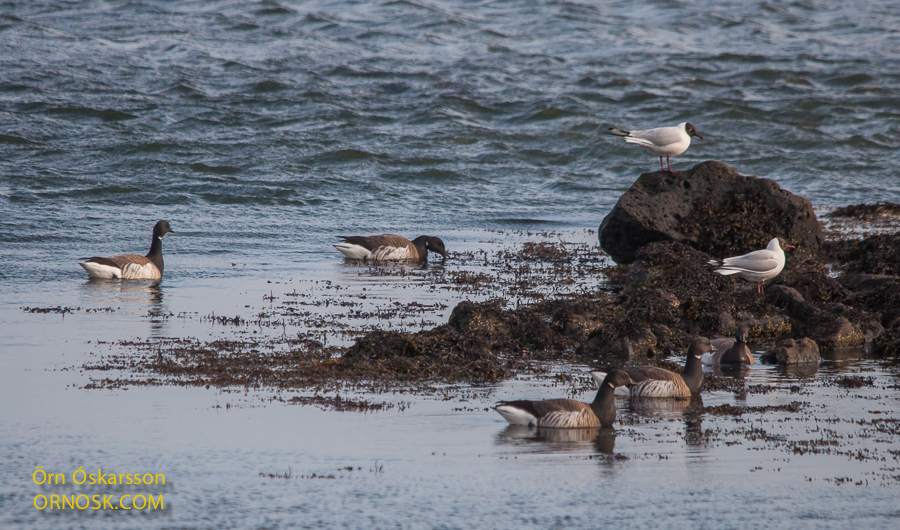
Fifty Golden Plovers by Selfoss

A group of around fifty Golden Plovers (Pluvialis apricaria) were in a meadow by Selfoss today. These are the first Golden Plovers here in the South but the first birds this spring were spotted in the East on March 18.
More on the Golden Plover in an earlier post.

